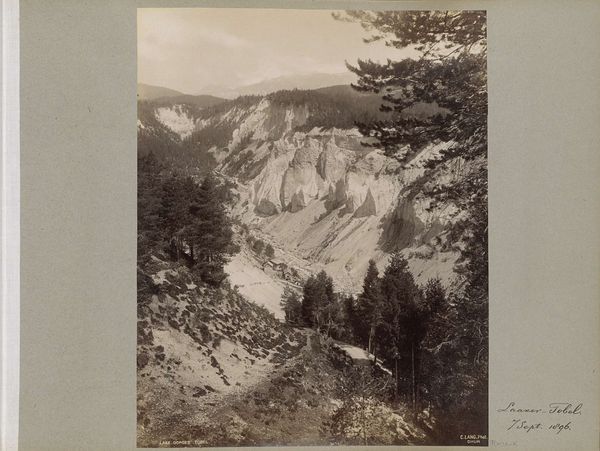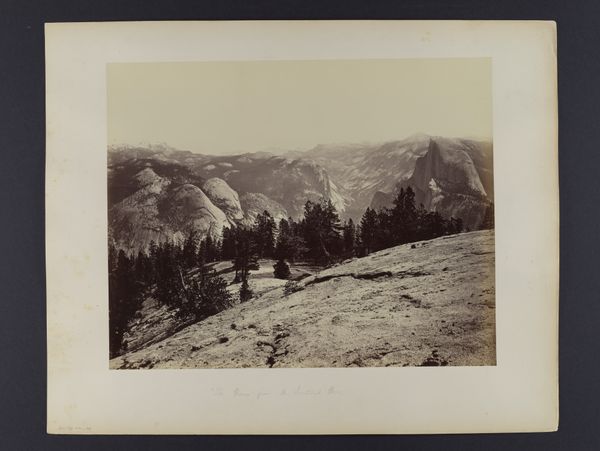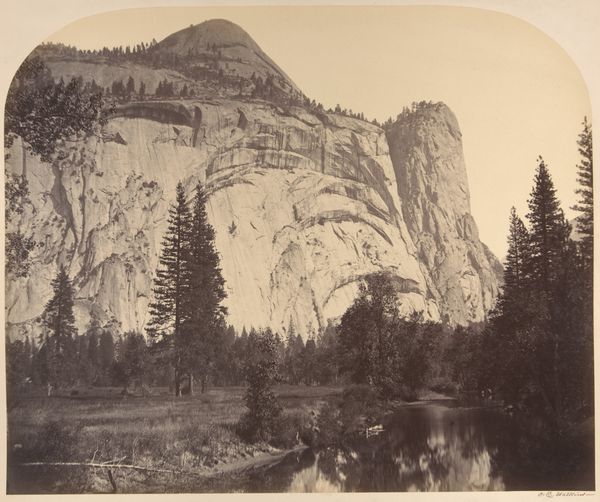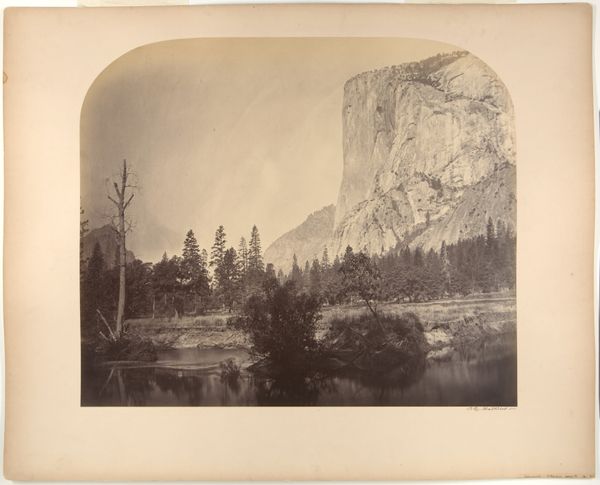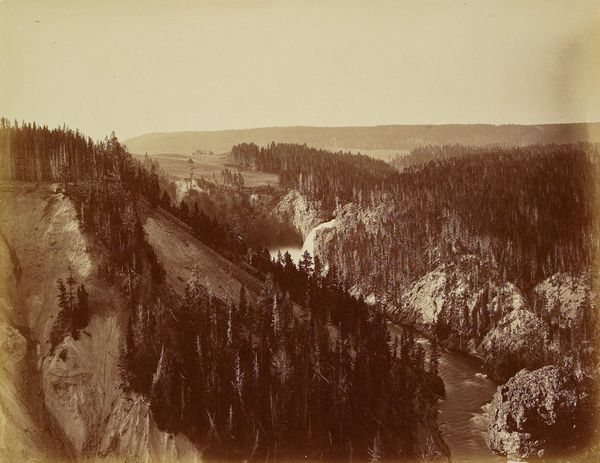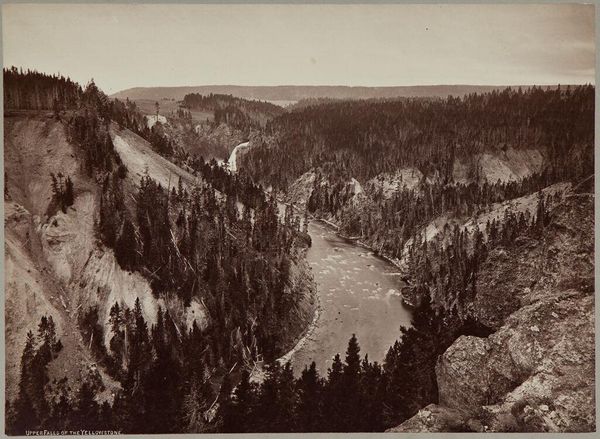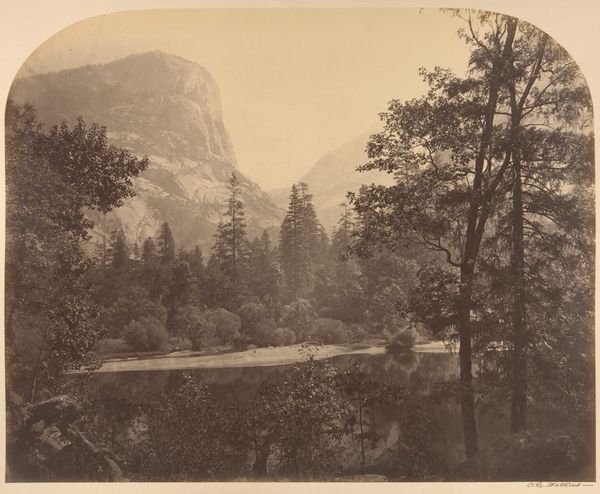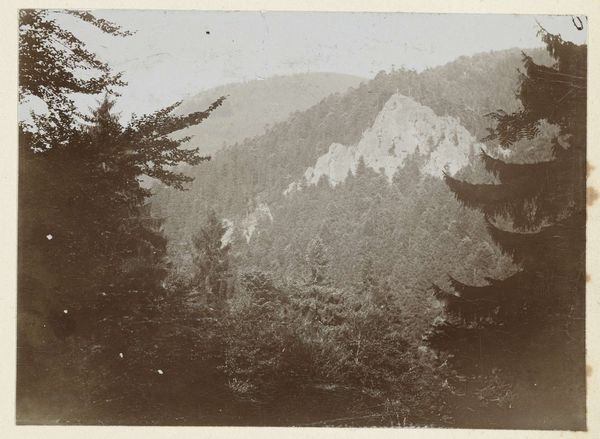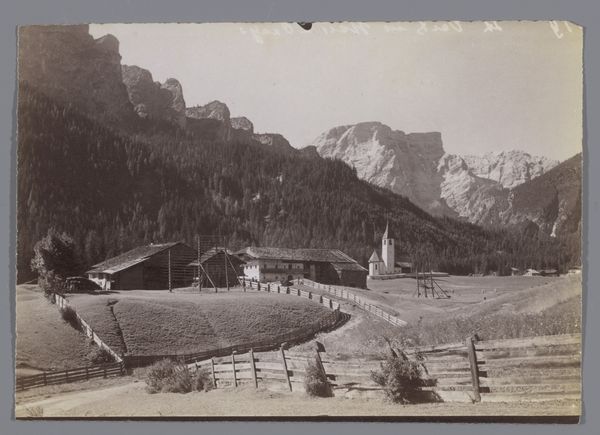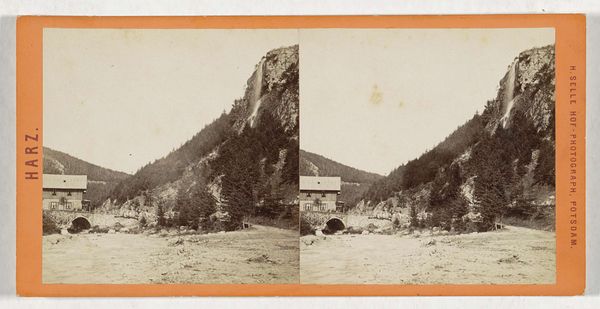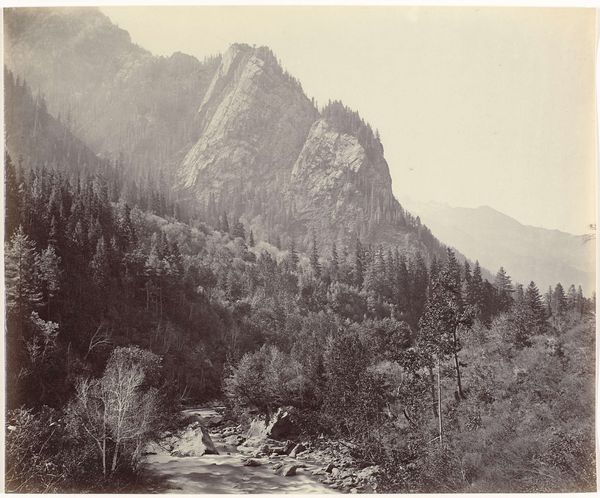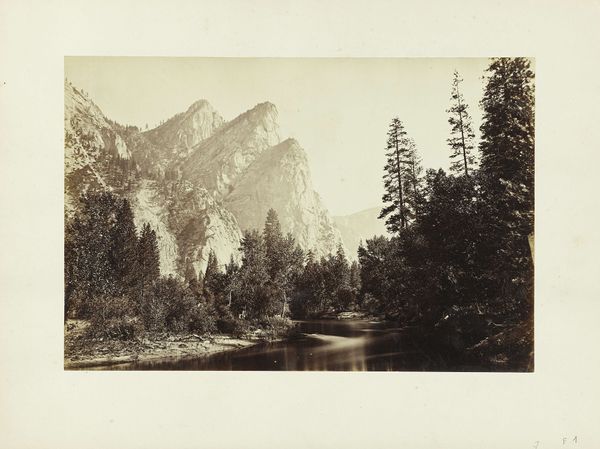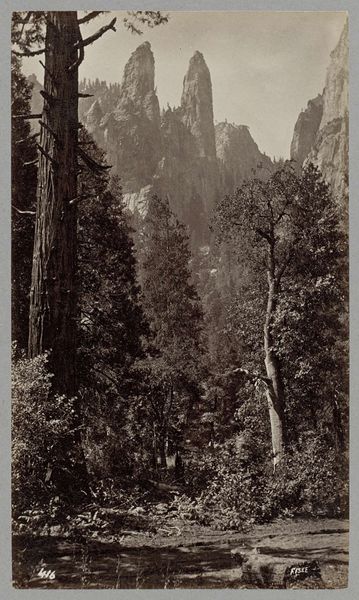
Dimensions: height 201 mm, width 263 mm
Copyright: Rijks Museum: Open Domain
Curator: Looking at this, I am struck by the light; how it bathes the rugged landscape in a soft, almost ethereal glow. It's an invitation, a suggestion of journeys untold, doesn't you think? Editor: Yes, there's a certain luminosity, a dreaminess to this gelatin-silver print from between 1851 and 1900, by A. Wimmer, titled "Semmeringspoor door een berglandschap, Oostenrijk," or "Semmering Railway Through a Mountain Landscape, Austria." But this romantic vision, the almost picturesque quality, feels somewhat at odds with the reality it depicts. The Semmering Railway, after all, was an emblem of industrial progress, built with immense human cost. Curator: Progress always comes with a price, doesn’t it? The landscape sighs as humanity weaves their way. To your point though, perhaps Wimmer’s focus isn’t so much on the engineering feat as on the juxtaposition – the taming, if you will, of nature’s grandeur. The tracks snake around the mountain's contours like the path to self-discovery. I feel it calling to me... like a passage, you know? Editor: Absolutely. But think about that "taming." The railway literally cuts through the mountain, disrupting ecosystems, displacing communities perhaps, all in the name of connection and expansion. Who is it really serving? How complicit were advancements in infrastructure and photography of the period? I think it is important to recognize that landscapes are never neutral. This image aestheticizes a colonial landscape and the artist participated. The Romantic style almost tries to disguise the raw extraction it depended on, by using the light like that you described. Curator: Ooh! I see now... The artist almost presents us a conundrum: we find something both awe-inspiring and destructive. To create something functional as a source of freedom, the old world is now the new. It is a little dark when you think about it, like, "Do I love what humans do, or do I hate it?" Editor: I feel that art from this period should also encourage critical conversations and help us challenge power imbalances of that time. I always welcome art that reflects what can be improved now and invites that open dialogue. It should be an art for everyone. Curator: Exactly, so perfectly said. What at first glance seems like a tranquil vision can ripple into quite some depth if we care to look.
Comments
No comments
Be the first to comment and join the conversation on the ultimate creative platform.
